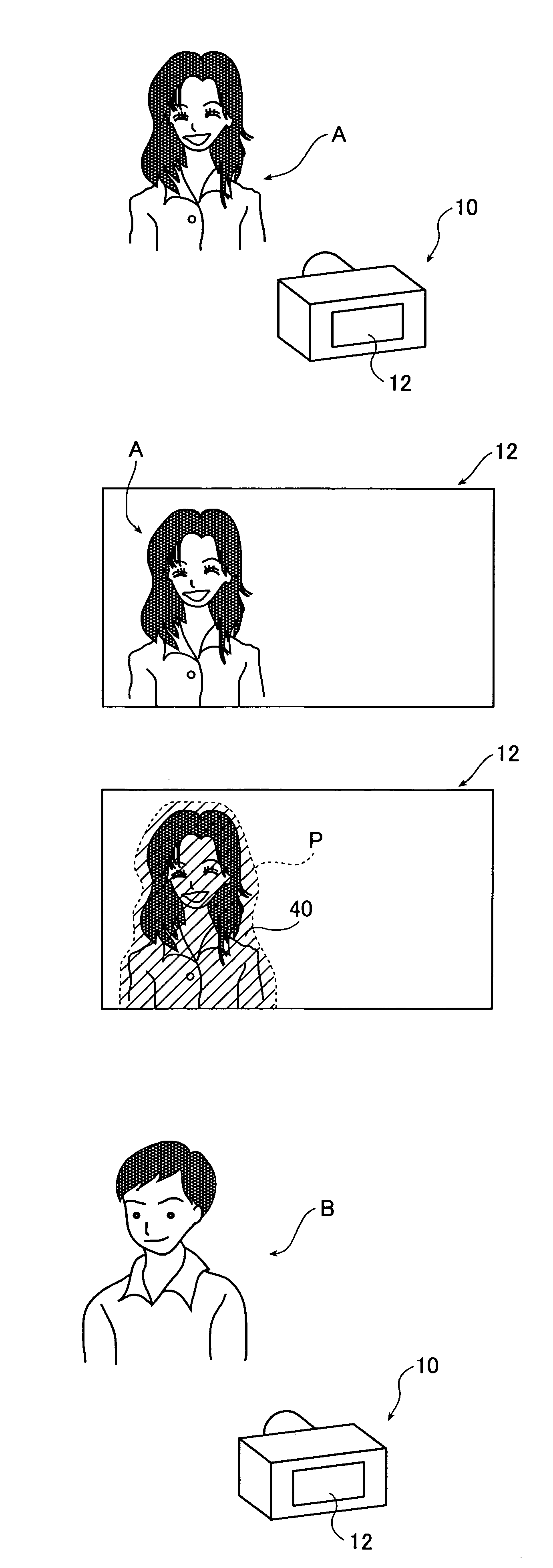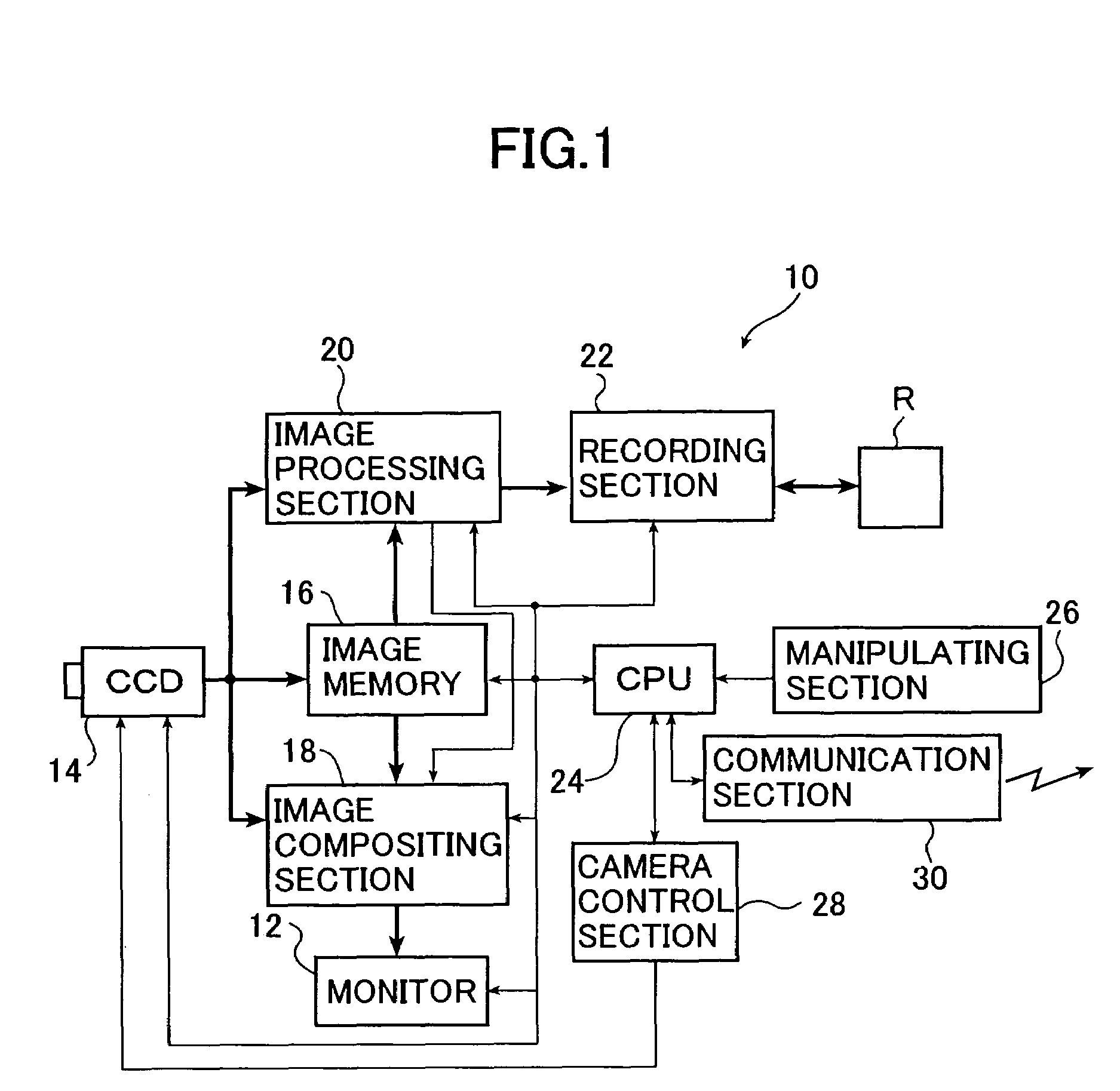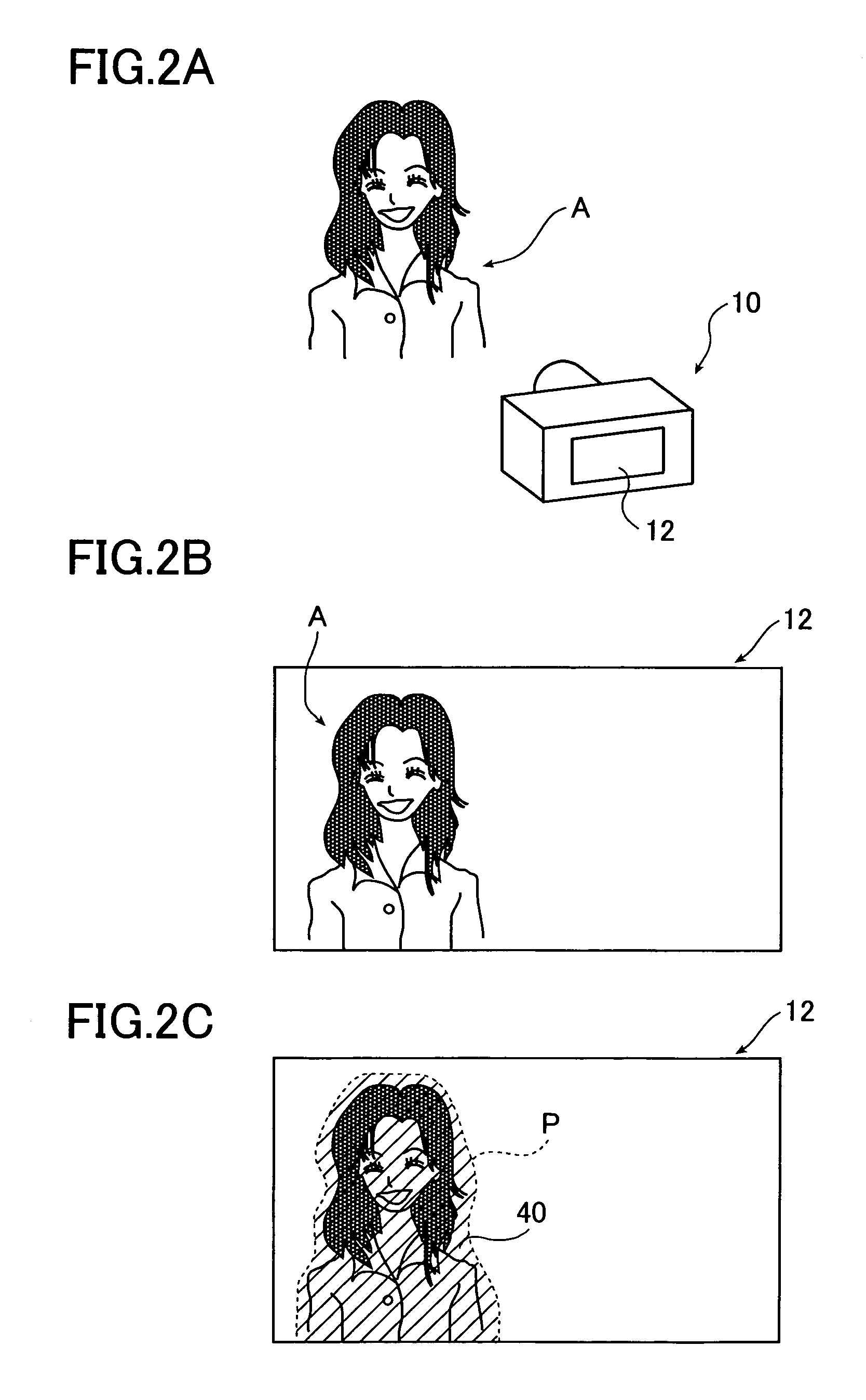Digital camera and method for compositing images
a digital camera and image processing technology, applied in the field of digital cameras and image processing methods, can solve the problems of not necessarily being an appropriate image, requiring retouching density, color and gradation, and prior art methods have had various problems, so as to facilitate not only the preparation
- Summary
- Abstract
- Description
- Claims
- Application Information
AI Technical Summary
Benefits of technology
Problems solved by technology
Method used
Image
Examples
first embodiment
[0054]We now describe the image processing method according to the second and third aspects of the present invention with reference to FIGS. 2 and 3 which illustrate how the camera is used in this embodiment of the image processing methods of the invention. FIG. 2A shows how subject A is photographed with the camera 10 as the image being taken is displayed on a monitor 12 on the back surface of the camera 10 (see FIG. 2B).
[0055]When the subject A is photographed with the camera 10, the image signals (data) representing the image (frame) of the subject A are obtained by the CCD 14 and stored in the image memory 16. The image data of the frame carrying the taken image (designated the Nth frame) is read out of the image memory 16 upon taking of the next image (frame N+1) and inputted to the monitor 12 after subjected to the thinning(2) processing to reduce the pixel density corresponding to the monitor display, then displayed on the monitor 12. Looking at the display of the monitor 12,...
second embodiment
[0091]We now describe the image processing method of the invention in which the concept of the invention is applied to stereoscopic photography.
[0092]To take a stereoscopic picture, the photographer sets a stereoscopic mode by the manipulating section 26 of the camera 10. He then translates the camera 10 and takes two successive frames N and N+1, the first being the image as viewed with the left eye and the second with the right eye (see FIG. 8).
[0093]A portion of the afterimage of the previous image (frame N) is displayed either on the monitor 12 or within the viewfinder. From the image of frame N (which was viewed with the left eye in the case shown in FIG. 8), the area having the largest camera-to-subject distance (which is a mountain 80 as seen from afar in FIG. 8) is clipped out automatically and displayed on the monitor screen, deliberately in the same position as in the image of frame N+1 which is currently taken (as viewed with the right eye in the case shown in FIG. 8). In ...
third embodiment
[0102]We next describe the image processing method of the invention In this embodiment, the concept of the invention is applied to the motion picture shooting mode.
[0103]This third embodiment can be achieved by adding to the various procedures performed to still pictures in the first and second embodiments of the image processing method of the invention as described before the information for designating the start and the termination of the reference image or the image to be composited with the reference image (image being taken) in the motion picture mode, as well as the editing information as stated before.
[0104]In this case, it is preferable that the motor driven shooting (sequential shooting) mode or the video shooting mode can be set in the camera 10. Alternatively, the camera 10 itself may be preferably a digital video camera.
[0105]We now describe the forth embodiment which represents the image processing method according to the forth aspect of the invention. In this embodimen...
PUM
 Login to View More
Login to View More Abstract
Description
Claims
Application Information
 Login to View More
Login to View More - R&D
- Intellectual Property
- Life Sciences
- Materials
- Tech Scout
- Unparalleled Data Quality
- Higher Quality Content
- 60% Fewer Hallucinations
Browse by: Latest US Patents, China's latest patents, Technical Efficacy Thesaurus, Application Domain, Technology Topic, Popular Technical Reports.
© 2025 PatSnap. All rights reserved.Legal|Privacy policy|Modern Slavery Act Transparency Statement|Sitemap|About US| Contact US: help@patsnap.com



